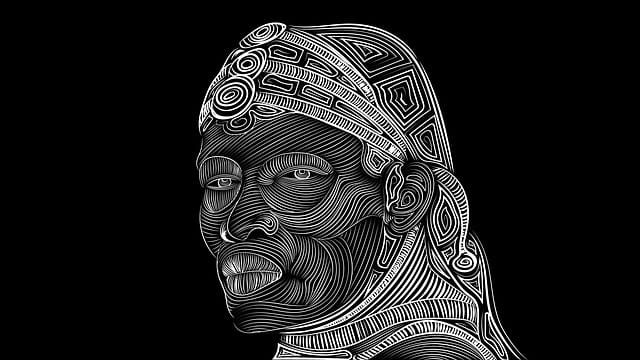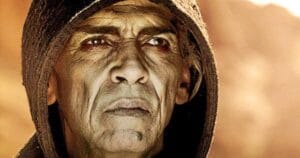We have lived in a civilized society that uses modern technology, yet there are hundreds of isolated tribes who continue to live in some of the most remote places on the planet. They have never been in contact with or communicated with members of contemporary civilization. The tribes have been living for hundreds of years with their distinct way of life and traditions that have remained untouched to this day.
Tribes reside in remote areas including thickly wooded areas, small individual islands, and inaccessible areas. All tribes use wood-made weapons to guard their herds. The Amazon jungle is a mysterious zone that is home to various uncontacted tribes or peoples.

14. The Brazillian Tribes
There are about 67 uncontacted tribes in Brazil (Brazilian Tribes or Indigenous Peoples of Brazil). According to the report, there are around 188 surviving indigenous languages with thousands of tribal speakers. Indigenous people (excluding uncontacted) make up 817,000 individuals (0.4 percent of the Brazilian population).
Location: Predominantly in the North and Central West, Brazil
13. The Batak Tribe
The Batak tribe is one of the 70 indigenous peoples in the Philippines. According to studies, they founded their colony thousands of years ago and had commercial contact with Chinese merchants as early as 500 AD. Anthropologists regarded the Batak, sometimes known as Titians, to be closely connected to the Ayta and Negrito tribes.
Location: Northeastern Palawan province, Philippines.
12. The Akuntsu Tribe
The group has just 5 people and is classified as an isolated tribe by the Brazilian government. According to the article, several Akuntsu members were slain by armed strangers, and their spoken language is Akuntsu, which is not understood by outsiders and belongs to the Tupari language family. The first formal contact was established in 1995 by FUNAI (the Brazilian government’s protective organization for Indian interests and culture).
Location: Amazon forest, Rondonia, Brazil
11. The Awa Tribe
Also known as Guaja, this endangered tribe has a population of about 350 people, with just 100 of them having outside contact. There were several reports of tribesmen being slain by settlers, and it appeared that their culture and traditions would be lost when farmland was cleared. In March 2003, the government eventually delineated Awa’s land.
Location: Eastern Amazon forest, Brazil.
10. The Zo’e Tribe
The tribe, which had a population of about 256 in 2010, lives in the Brazilian state of Para on the Cuminapanema River, and their language is Zoe. The Zo’e peoples usually wear a wooden plug knife resembling the bottom lip, and their traditions and homes are unique.
Location: Para, Brazil
9. The Peruvian Tribe
This tribe was met by a tourist while trekking through the Peruvian jungle. The group of Peruvian tribes attempted to converse with the visitors, but the tribesman did not understand the outside language, thus they vanished into the forest. Anthropologists searched for them after the scene but were unsuccessful.
Location: Amazon forest, Peru
8. The Jarawa Tribe
Jarawas are an Adivasi indigenous people of the Andaman Islands, residing on the western side of the South and Middle Andaman islands in India. Their language is Jarawa, and their religion is based on traditional beliefs. Since 1998, about 250-300 individuals have lived in the Andaman jungle. Tarawas have constant interaction with contemporary society, particularly visitors, yet they maintain their traditions and lifestyle.
Location: Western side of South Andaman and Middle Andaman Islands.
7. The Vietnamese Ruc Tribe
During the Vietnam War, North Vietnamese forces discovered Ruc peoples living in caverns in eastern Quang Binh province. The Jungle was devastated after a bombing strike, and the Ruc tribe chose to live in a civilized setting rather than in their traditional dwellings, but they still live their way of life.
Location: Quang Binh province, Vietnam
6. The Nukak-Maku Tribe
The endangered tribe is located between the Guaviare and Inirida Rivers in Colombia’s Amazon forest, has a population of approximately 300 people, and speaks the Nukak language. Nakaks are excellent hunters that hunt using blowguns and darts laced with poison created from various plants. Their favorite hunting animals are monkeys and birds, and they also consume a variety of fish, fruits, and honey.
Location: Amazon basin, Guaviare department, Republic of Columbia
5. The Surma Tribe
This is the world’s largest tribe, having a population of around 186,875 in 2007, with the majority of the people localized in Ethiopia and South Sudan. Suri, Mursi, and Me’en are the tribe’s primary languages, and their tradition and art are still alive and well in the wood house, with the Surma lady wearing a lip plug that is unique to the Surma tribe. Surma tribes range in size from 500 to 2500 people, with minimal variation in culture and way of life. The Surma people’s assumption of modernity is the employment of the AK-47 rifle to protect their cattle and even their groups.
Location: Ethiopia, South Sudan
4. The Korowai Tribe
The Kolufo are a tribe of about 3,000 people that live in the southern section of western Indonesian New Guinea. They spoke in Korowai, and the majority of the inhabitants resided in tree homes in remote areas. After being successfully reached by archaeologists and missionaries in 1970, they learned of the existence of humanity and allowed outsiders in.
Location: Southern Papua, Western part of Indonesian New Guinea.
3. The Pintupi Nine
In 1984, an unknown group of indigenous was discovered in Western Australia, a group of nine Pintupi people consisting of two wives of a previous husband and seven children. The group met the person from Kiwirrkura while looking for their ancestors; after building contact and connections, the Pintupi nine were welcomed and now live at Kiwirrkura. In 1986, a member named Yari Yari returned to the Gibson Desert, where the group originated and has lived there ever since.
Location: Gibson Desert, 850 km west of Alice Springs, Australia
2. The man in the hole
The sole guy remaining in the hut of an obscure tribe lives in the Amazonian bush; he is not allowed outsiders to contact and hide when others try to approach. He is said to be the final survivor of the mysterious tribe. To protect him, the government declared a 31-square-mile exclusion zone, and no one is permitted near his activity zone. No one knows the tribe’s history; anthropologists have tried to meet him for the past 15 years, but he has refused.
Location: Amazonian forest, Brazil
1. The Sentinelese Tribe
North Sentinel Island, one of the Andaman Islands in India, has a population of 250 to 300 people and is separated from the other islands. It spanned 72 square kilometers. The Sentinelese eschew any interaction with outsiders and struggle to protect them. They were unaffected by modern civilization. Two local fishermen were murdered by tribesmen in January 2006 as their boat drifted off the shore of the island.
Location: North Sentinel Island, Andaman and Nicobar Islands, India







